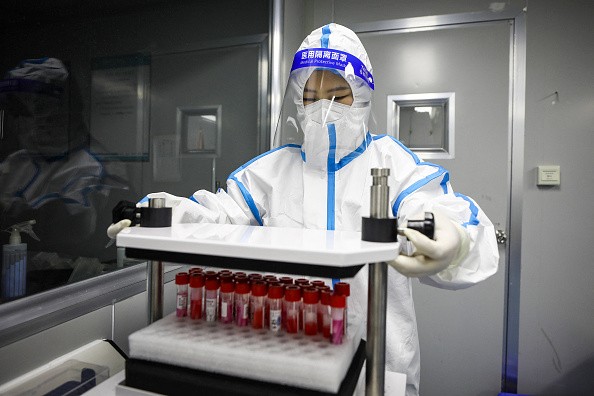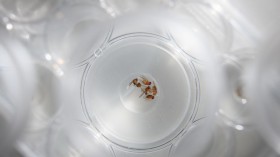Researchers discovered that a predatory bacteria capable of penetrating and digesting hazardous bugs like E.coli and Salmonella can design its own shape to fit inside its target.
Scientists have discovered that the bacterium Bdellovibrio bacteriovorus's curved (boomerang-like) form is a crucial trait that impacts its lifestyle, allowing it to efficiently enter, develop, and survive within other bacteria.
Predator Bacteria that dissolves E.coli
 (Photo : STR/AFP via Getty Images)
(Photo : STR/AFP via Getty Images)

In a journal article published today in Nature Communications, scientists from the Universities of Nottingham, Birmingham, and Newcastle demonstrated that the bacterium's contoured or boomerang-like shape is an essential characteristic that impacts its lifestyle, allowing it to proficiently colonize, grow, and live inside other bacteria, as cited by ScienceDaily.
The researchers also discovered that a bacterial cell-wall-modifying gene has unique properties that allow the bacteria to build their own particular form.
Scientists recently discovered how the microorganism invaded prey cells without injuring itself by shaping prey into a spherical form utilizing proteins secreted by the Bdellovibrio to modify the prey's cell walls.
Bdellovibrio bacteriovorus may be isolated from soil and water all over the globe, and each isolation has a curved form, but it is unclear why and how they are structured this way.
The researchers discovered in this new publication that the bent boomerang form of the Bdellovibrio is generated by a specific protein Bd1075 that the Bdellovibrio employs on itself (rather than secreting into prey).
The curved form is lost in the absence of this protein.
The modification of this particular shape slows prey infiltration and modifies how the Bdellovibrio fits within the prey cells as they expand.
As a result of the development of Bd1075, Bdellovibrio has been able to influence itself in order to efficiently penetrate and fit into the prey cell's cytoplasm.
Emma Banks and Professor Liz Sockett, along with Dr. Carey Lambert, led the research at the University of Nottingham's School of Life Sciences.
They collaborated with Professor Andy Lovering's team at the University of Birmingham's Mauricio Valdivia Delgado.
Staring down the microscope to see that our color-tagged Bd1075 shape protein goes to only one side of the Bdellovibrio cell the outer curve.
When they created definite modifications to the Bd1075 protein, the protein then ended in failure to go to the correct place, which helped to tell them how the protein localizes inside of curved Bdellovibrio cells, Emma Banks said.
Also Read: Can 'Oil-Eating' Bacteria in Canadian Arctic Help Clean Up Oil Spill?
What is Bdellovibrio bacteriovorus?
Bdellovibrio bacteriovorus is a gram-negative, obligately aerobic bacterium that feeds on other gram-negative bacteria, such as E. coli and Aquaspirillum serpens, as per PubMed Central.
After colliding with a prey cell and becoming irrevocably attached to its surface, the predator penetrates the outer membrane, kills the prey cell by stopping its respiration and development, and takes up home in the periplasm between the prey's inner and outer membranes.
The Bdellovibrio cell multiplies and divides, employing the macromolecules of the prey as fuel and building blocks.
The Bdellovibrio predator and the deceased prey cell in which it is developing are referred to as a bdelloplast at this stage.
During the invasion and digesting cycle, the Bdellovibrio causes considerable changes in the structure of the prey cell, not all of which are completely understood.
The predator alters the prey's external membrane and peptidoglycan layer without destroying it, employing a range of enzymes, such as glycanases, deacetylases, peptidases, and lipopolysaccharides.
This alteration and infiltration process alters the shape and other features of the invaded cell, causing it to "round up" and expand.
The Bdellovibrio also changes the inner (cytoplasmic) cell wall of the prey, allowing degradative enzymes and degraded cellular components to be transmitted between the prey's plasma membrane and the predator.
Related article: Zombie Bacteria: New Bacteria Species Found Invading Multiple Cells of Living Organism
© 2024 NatureWorldNews.com All rights reserved. Do not reproduce without permission.





